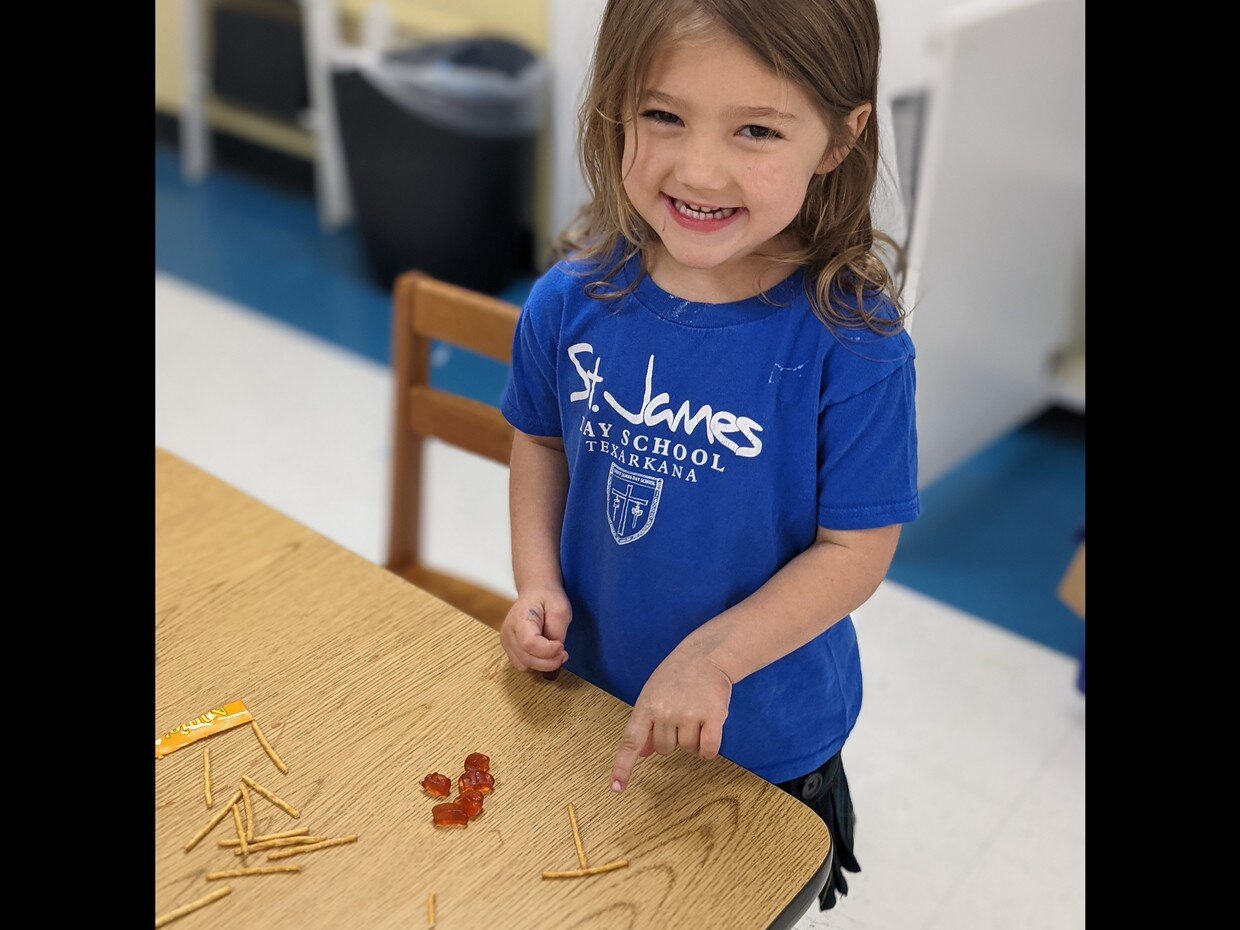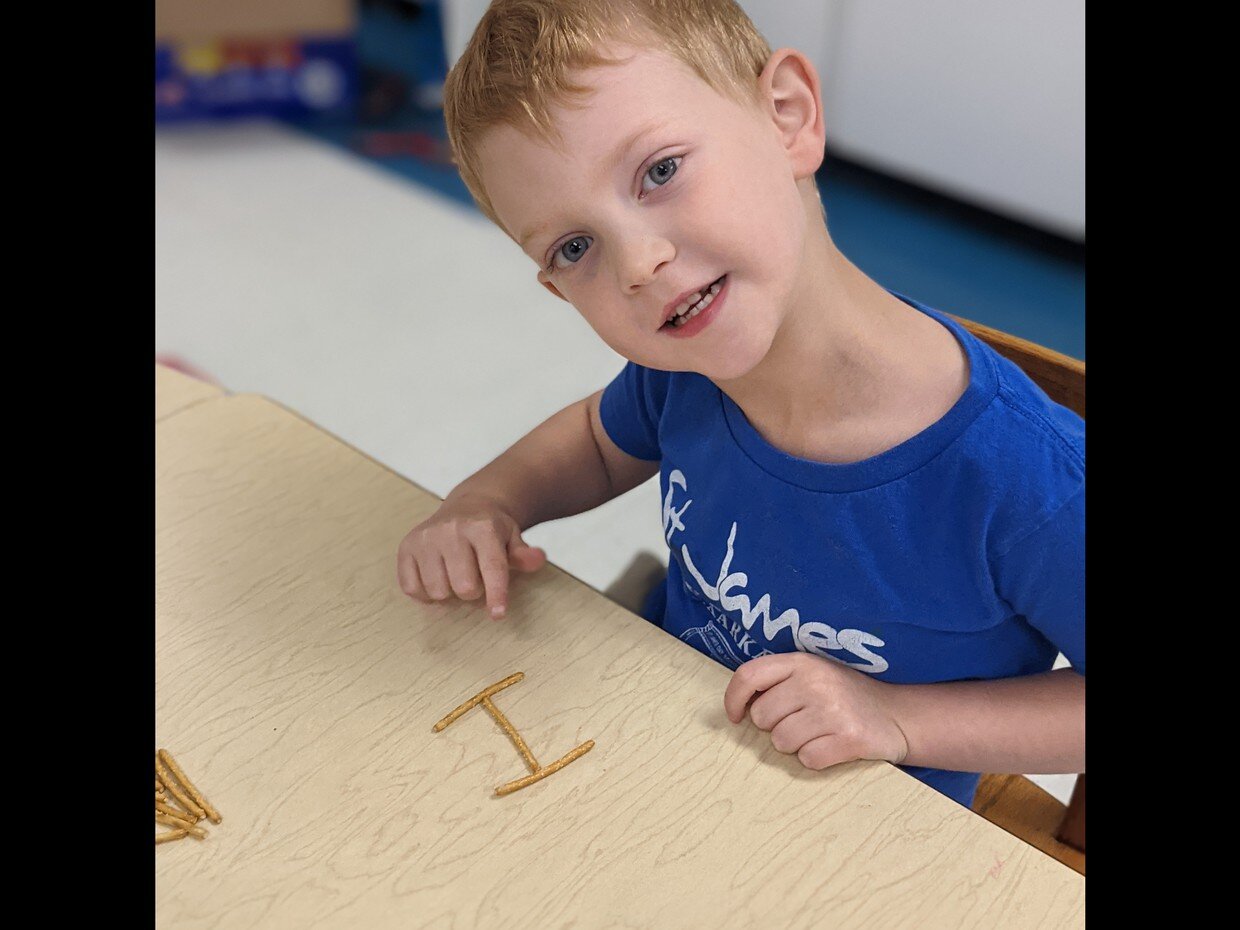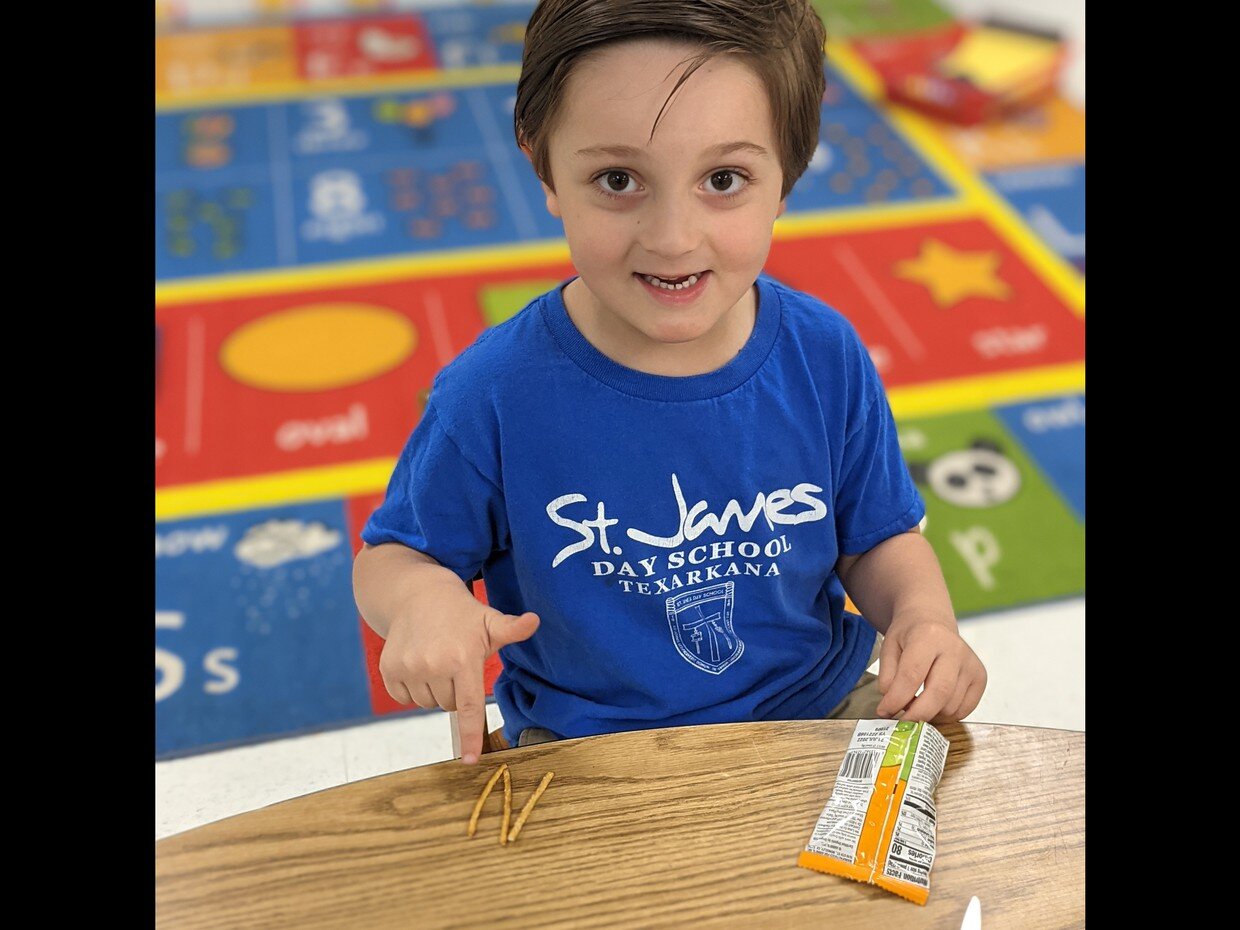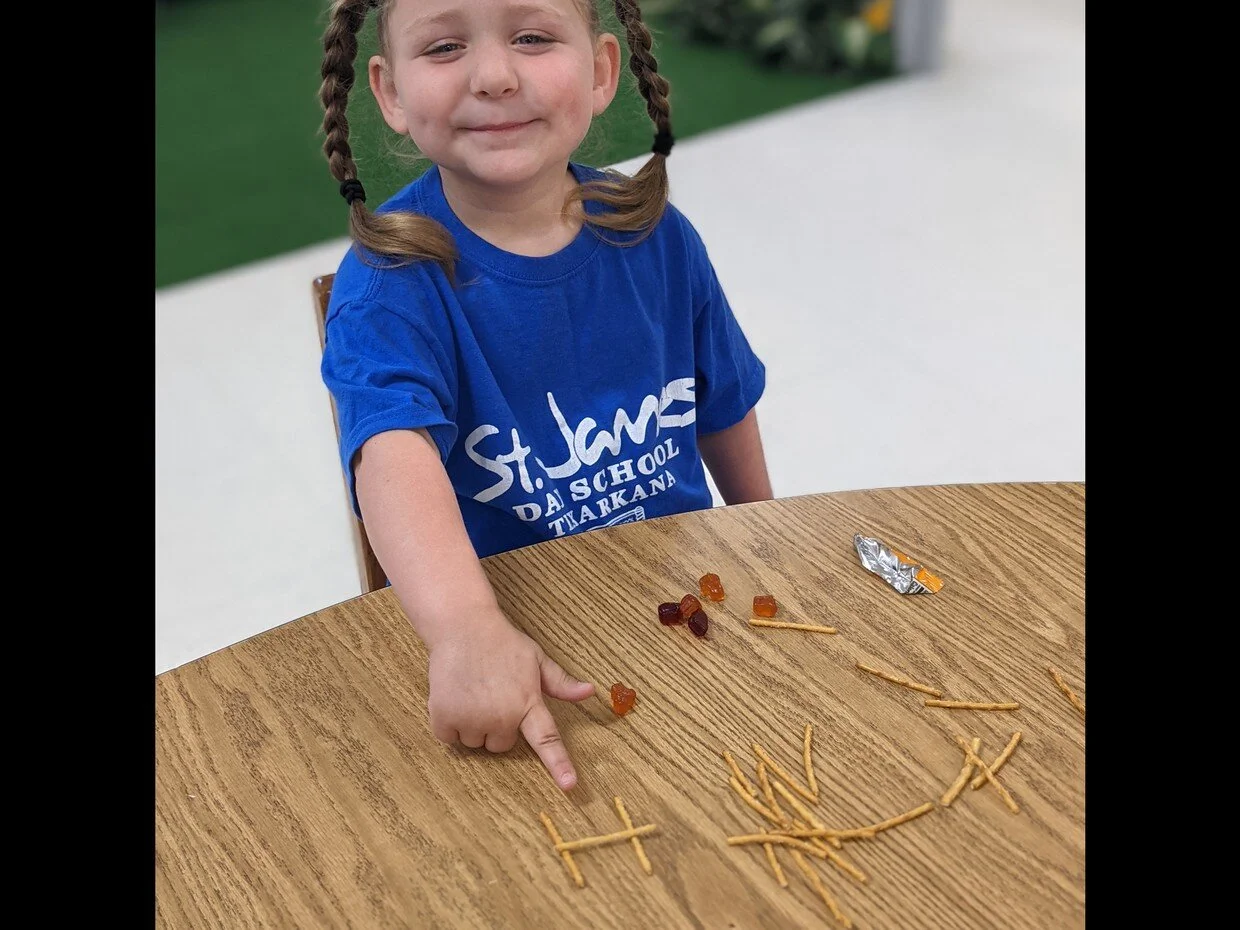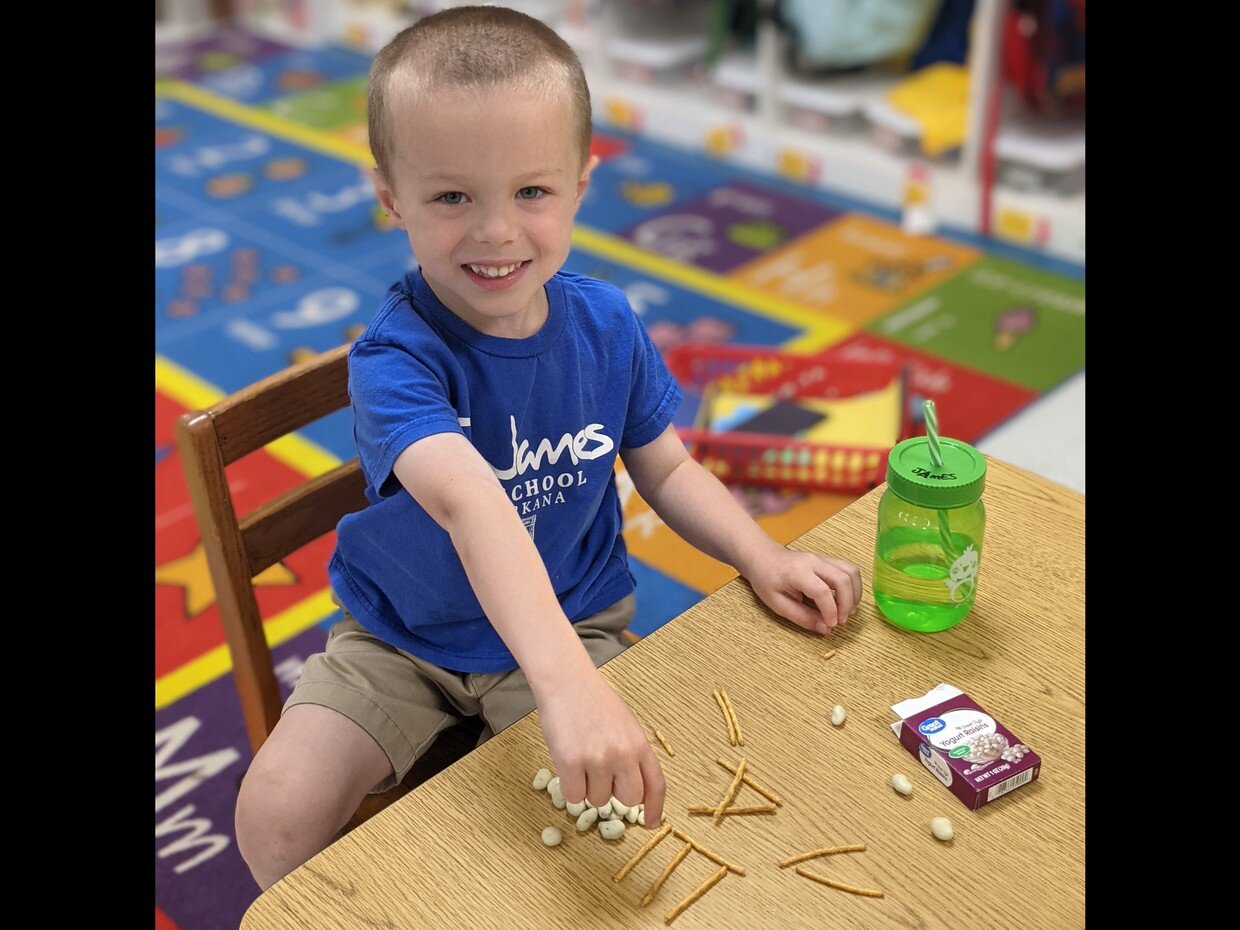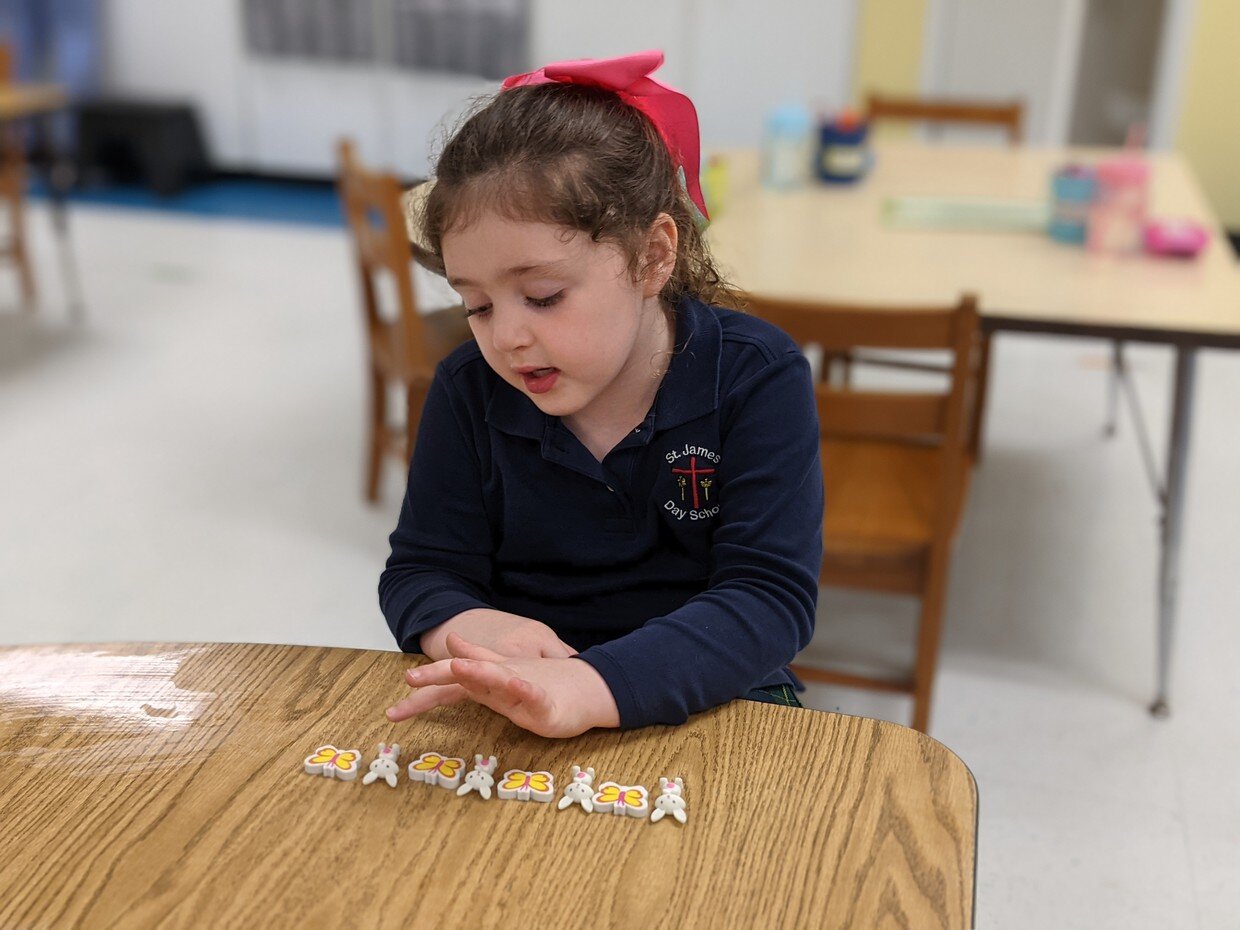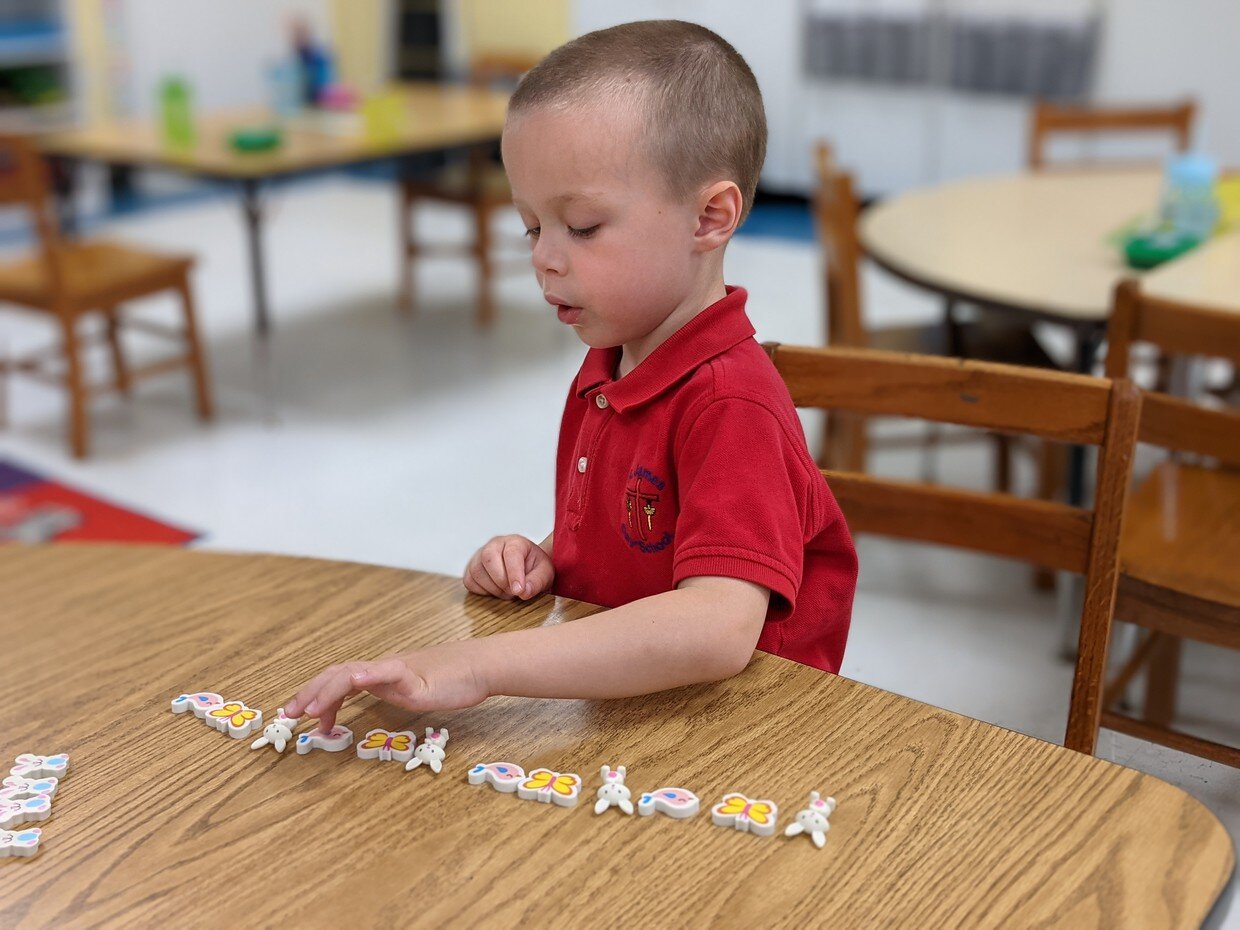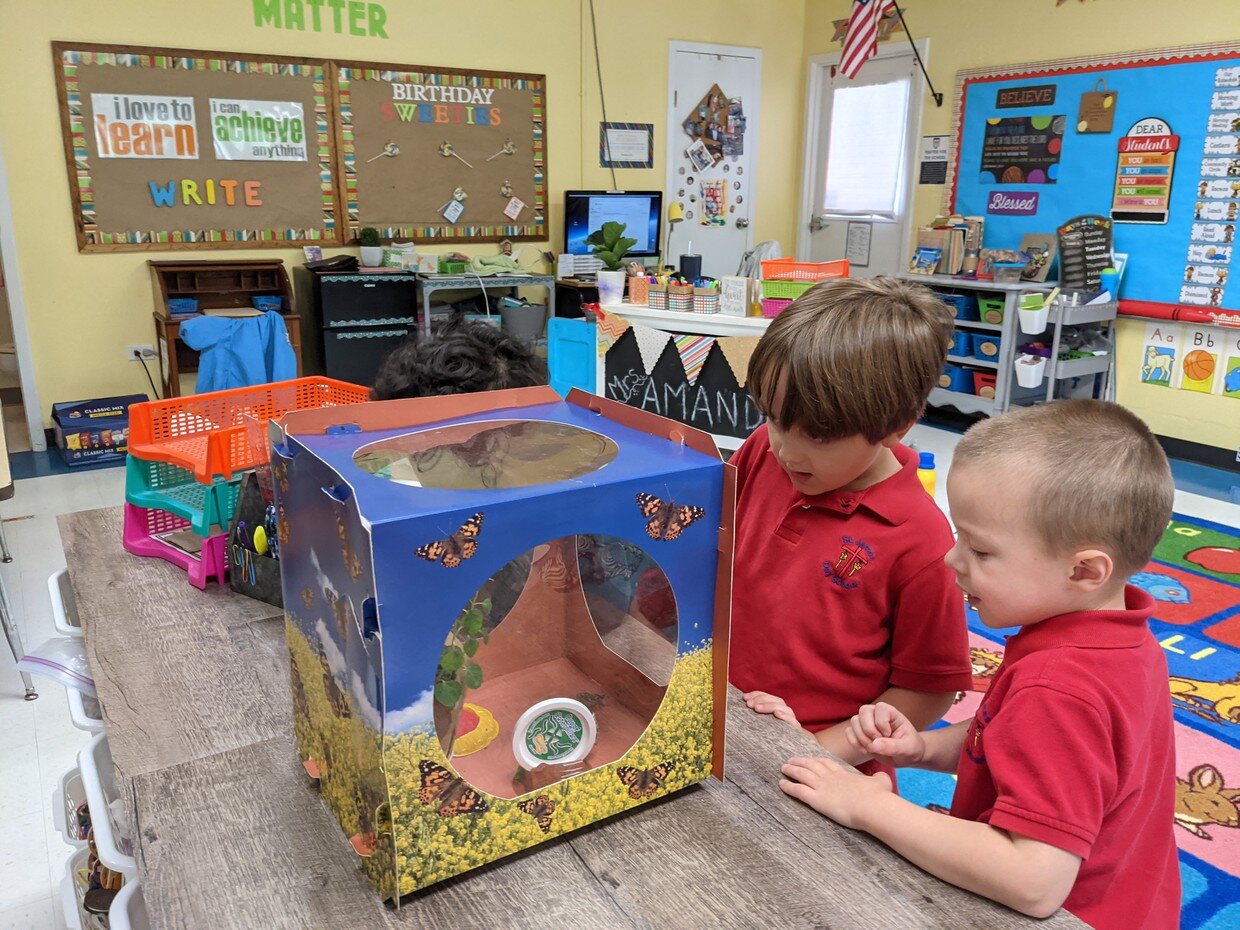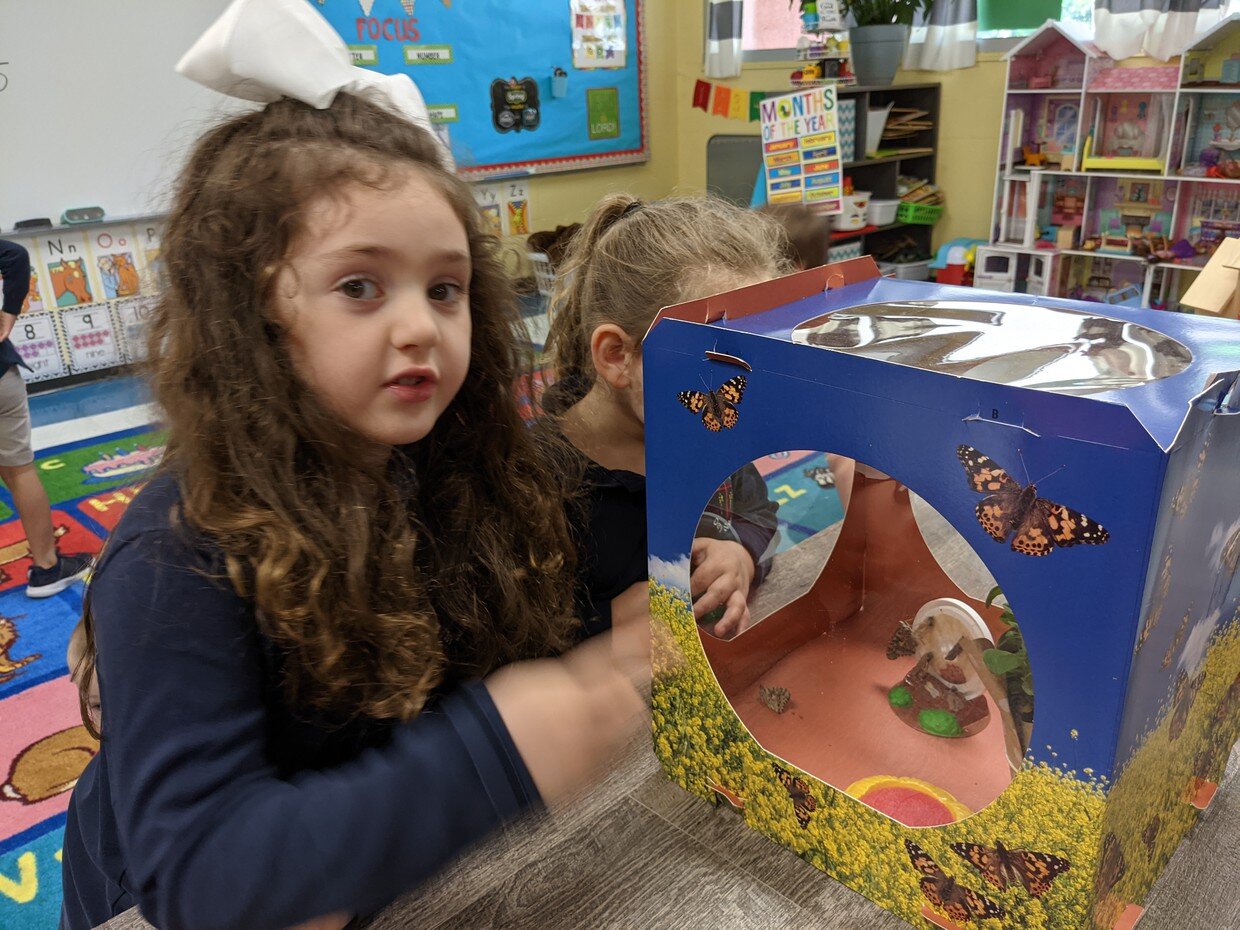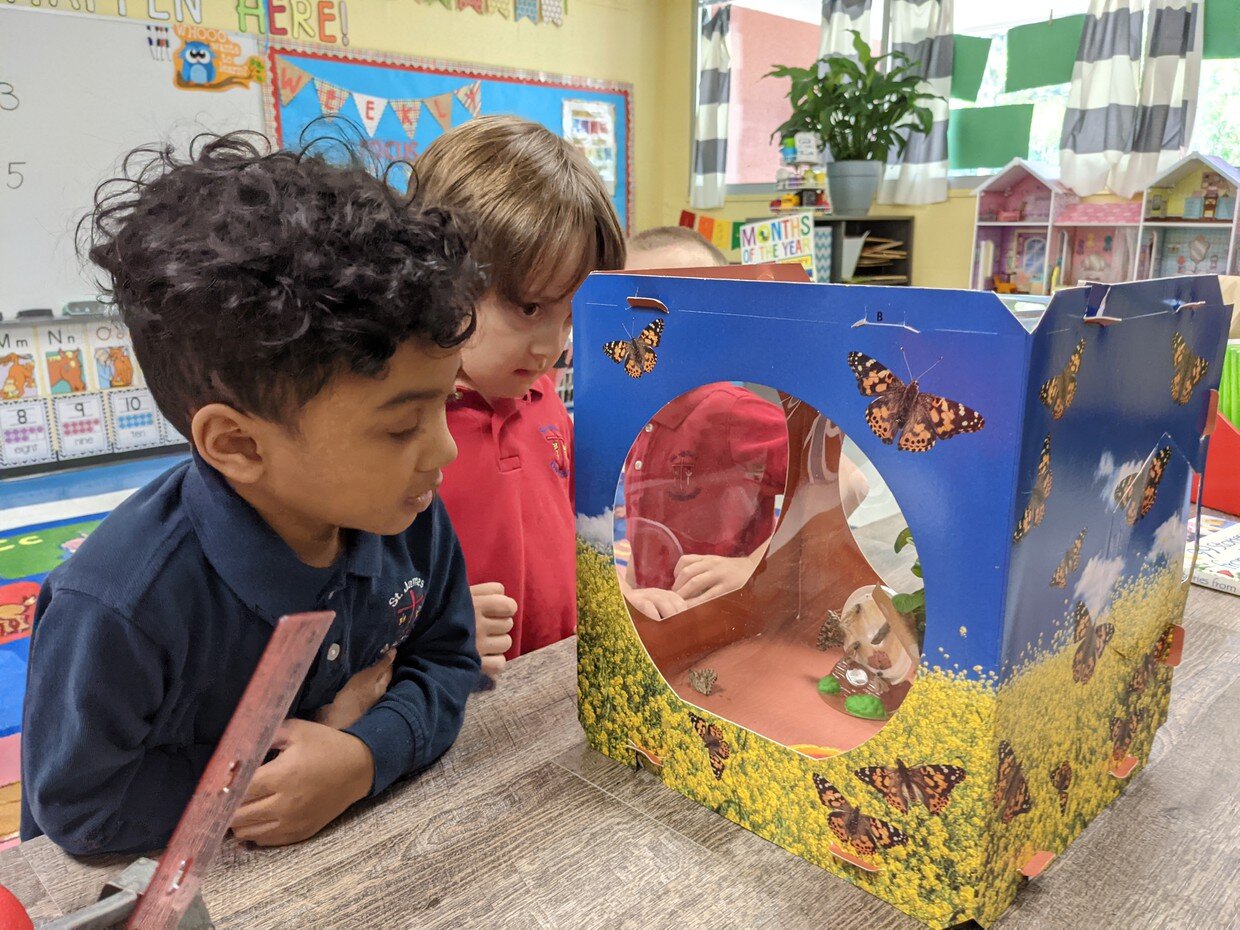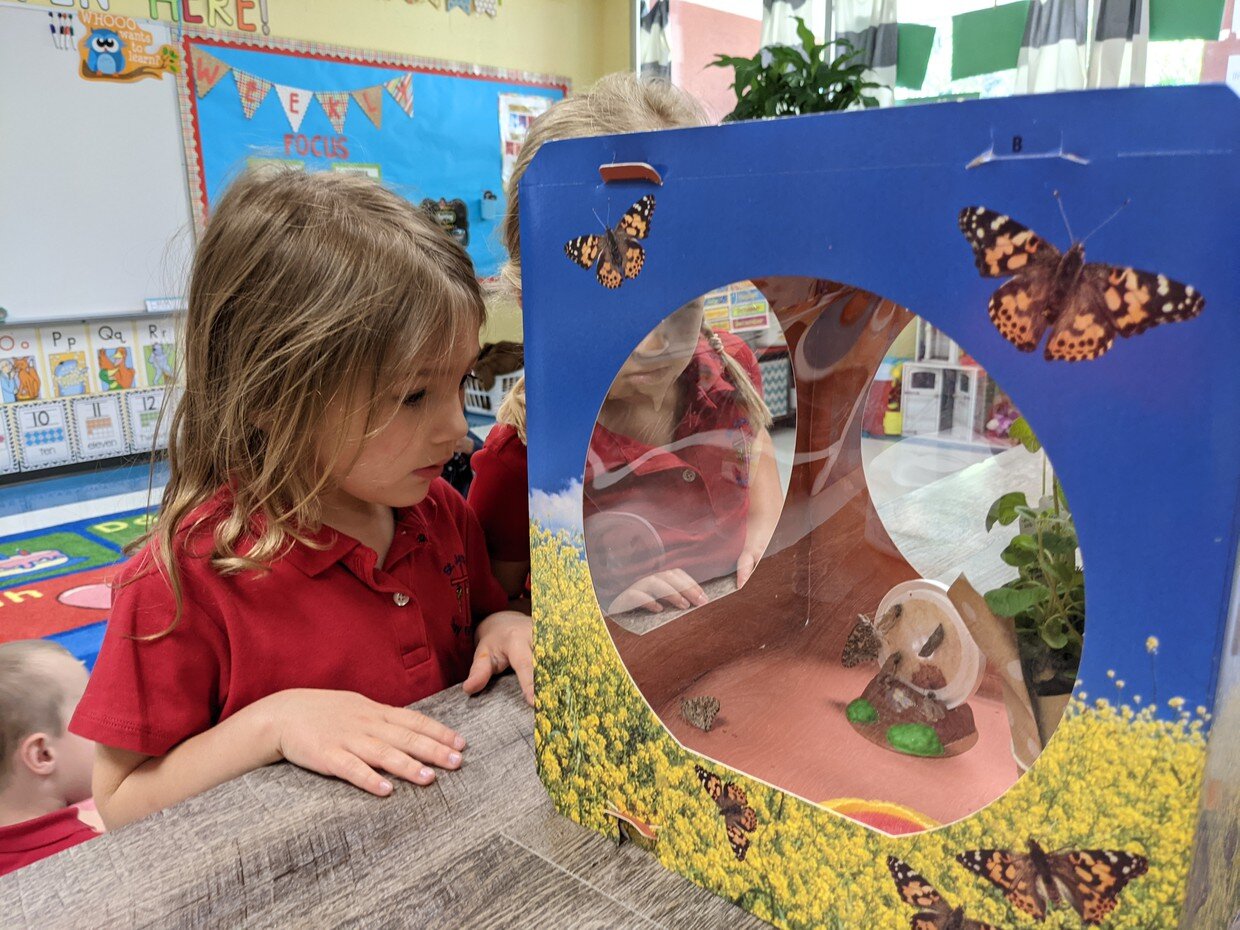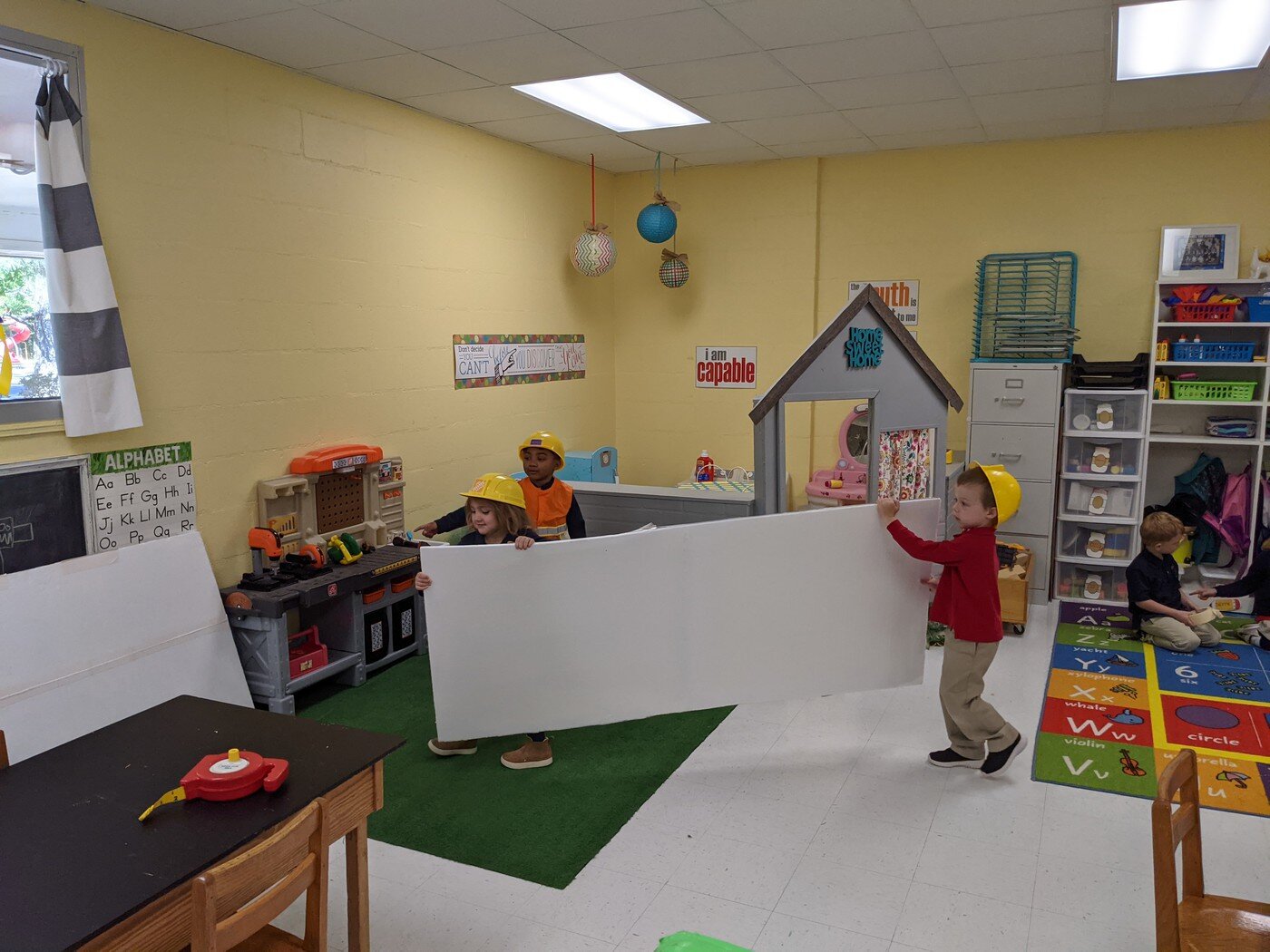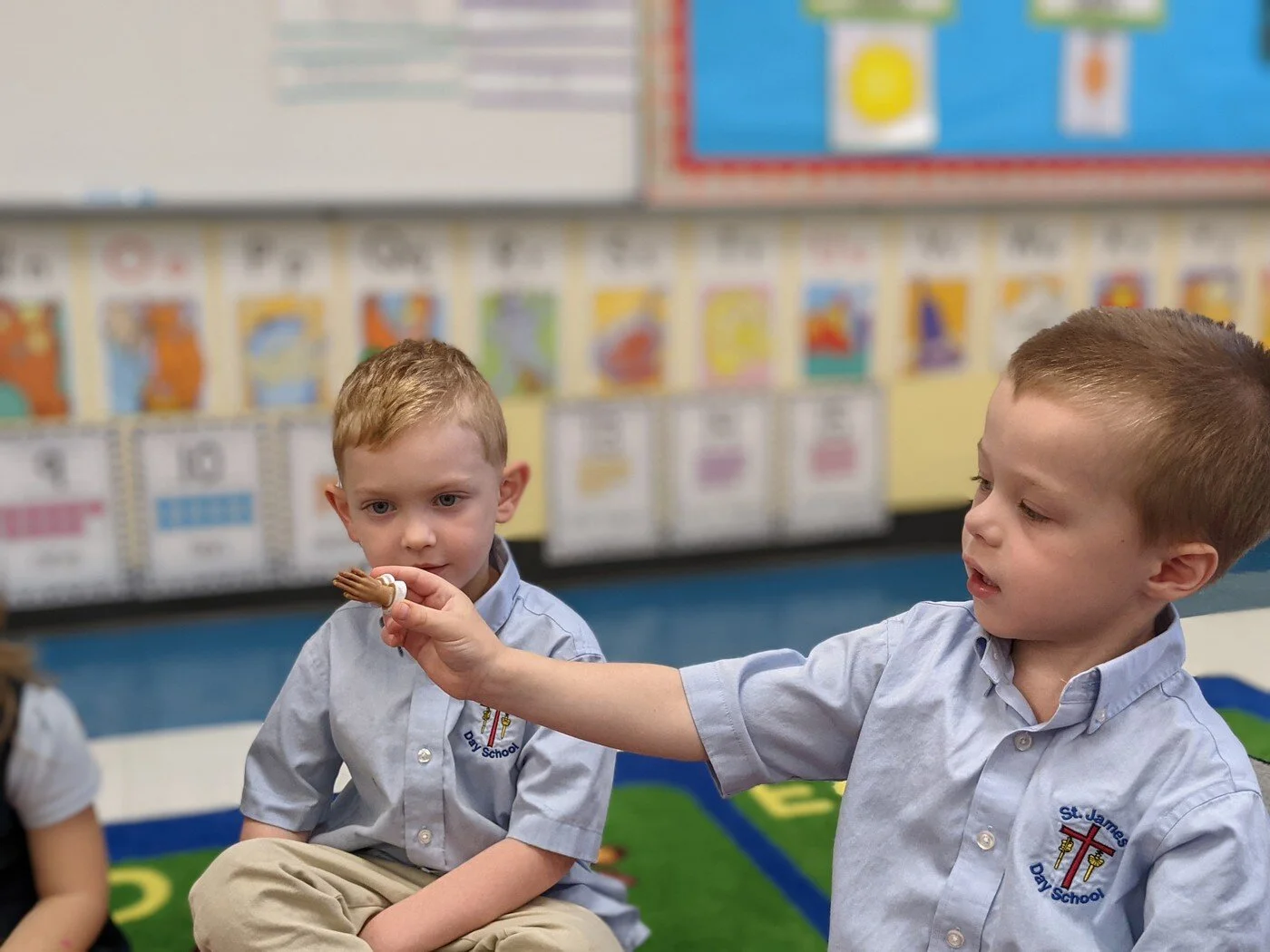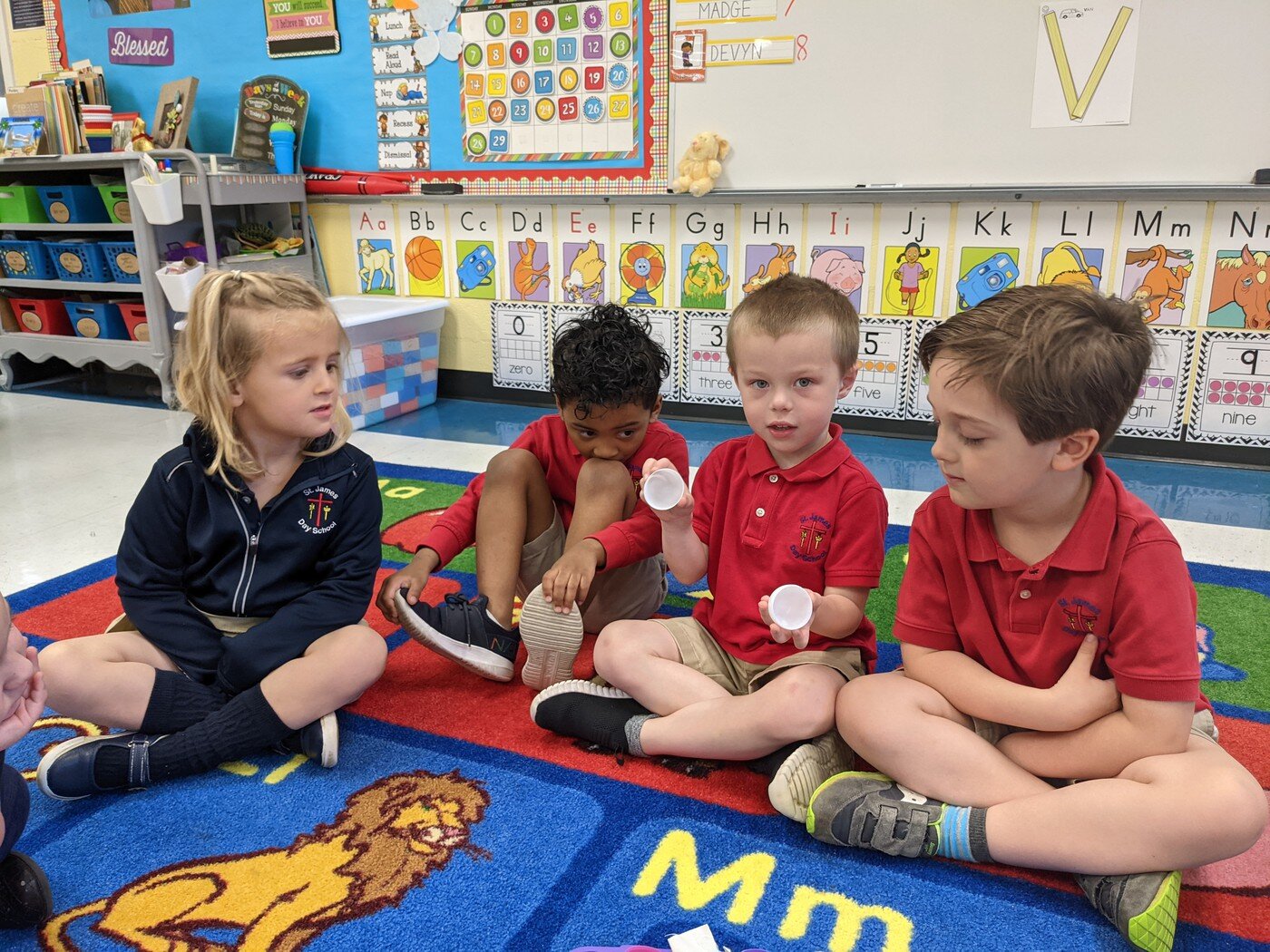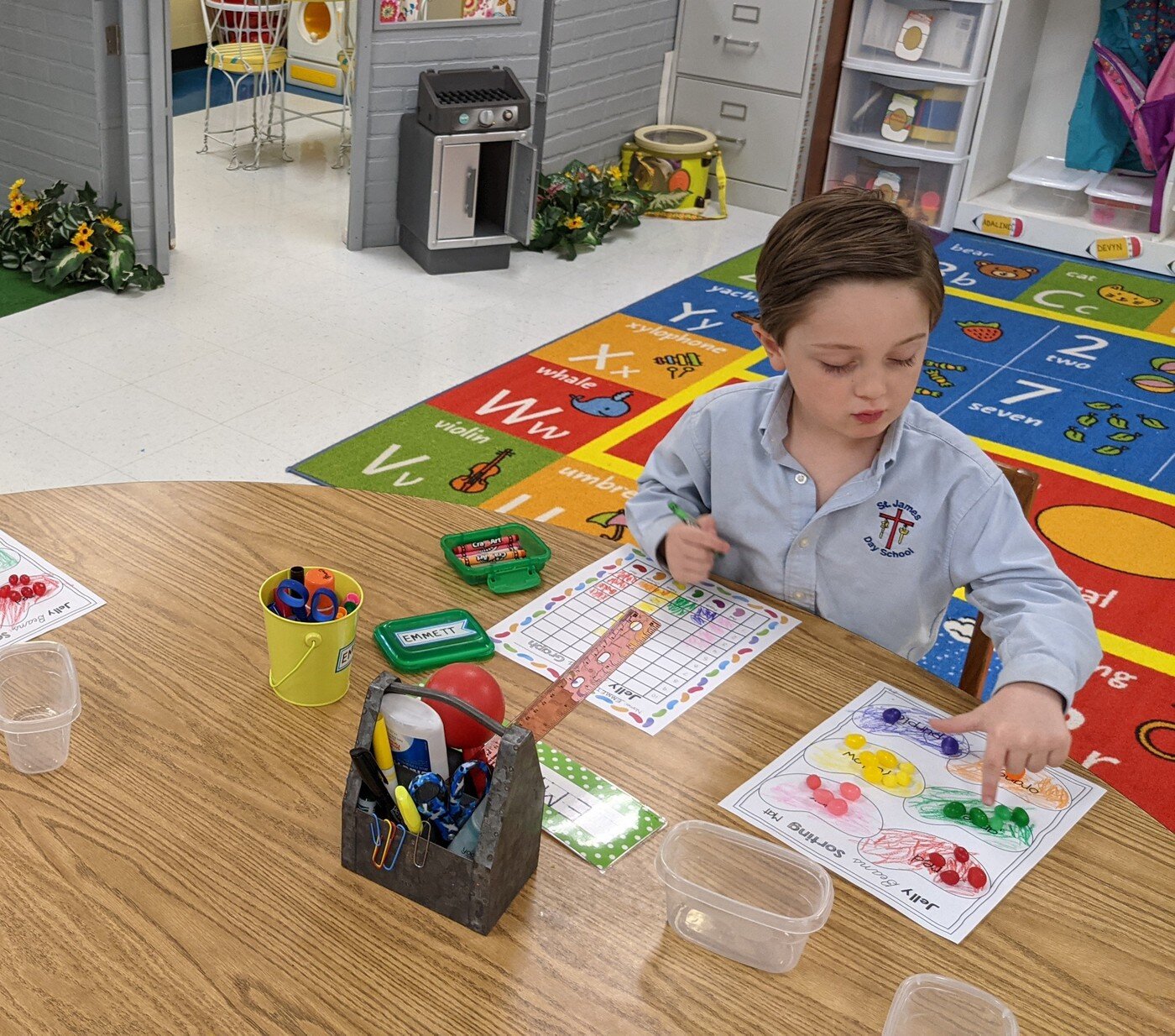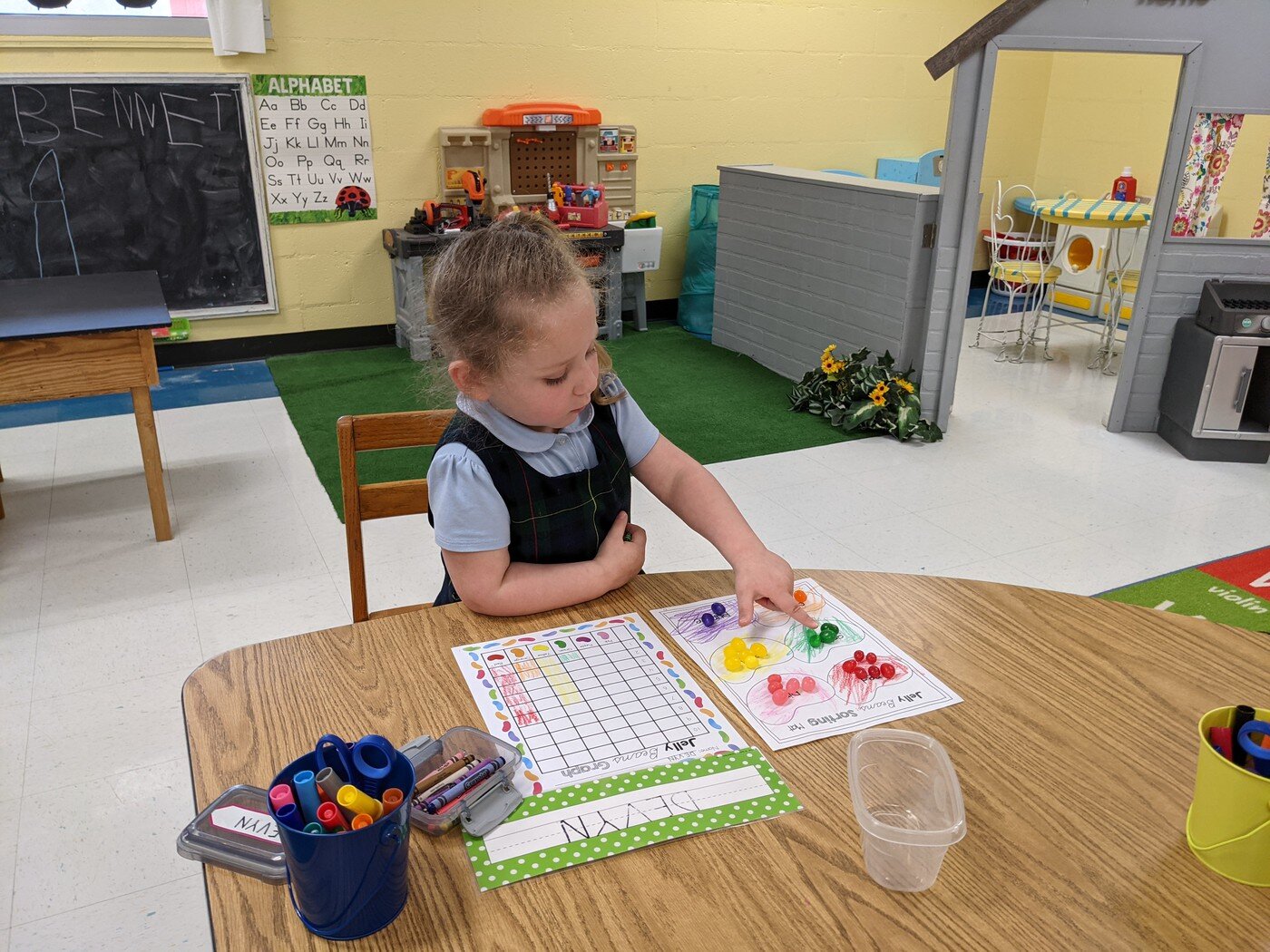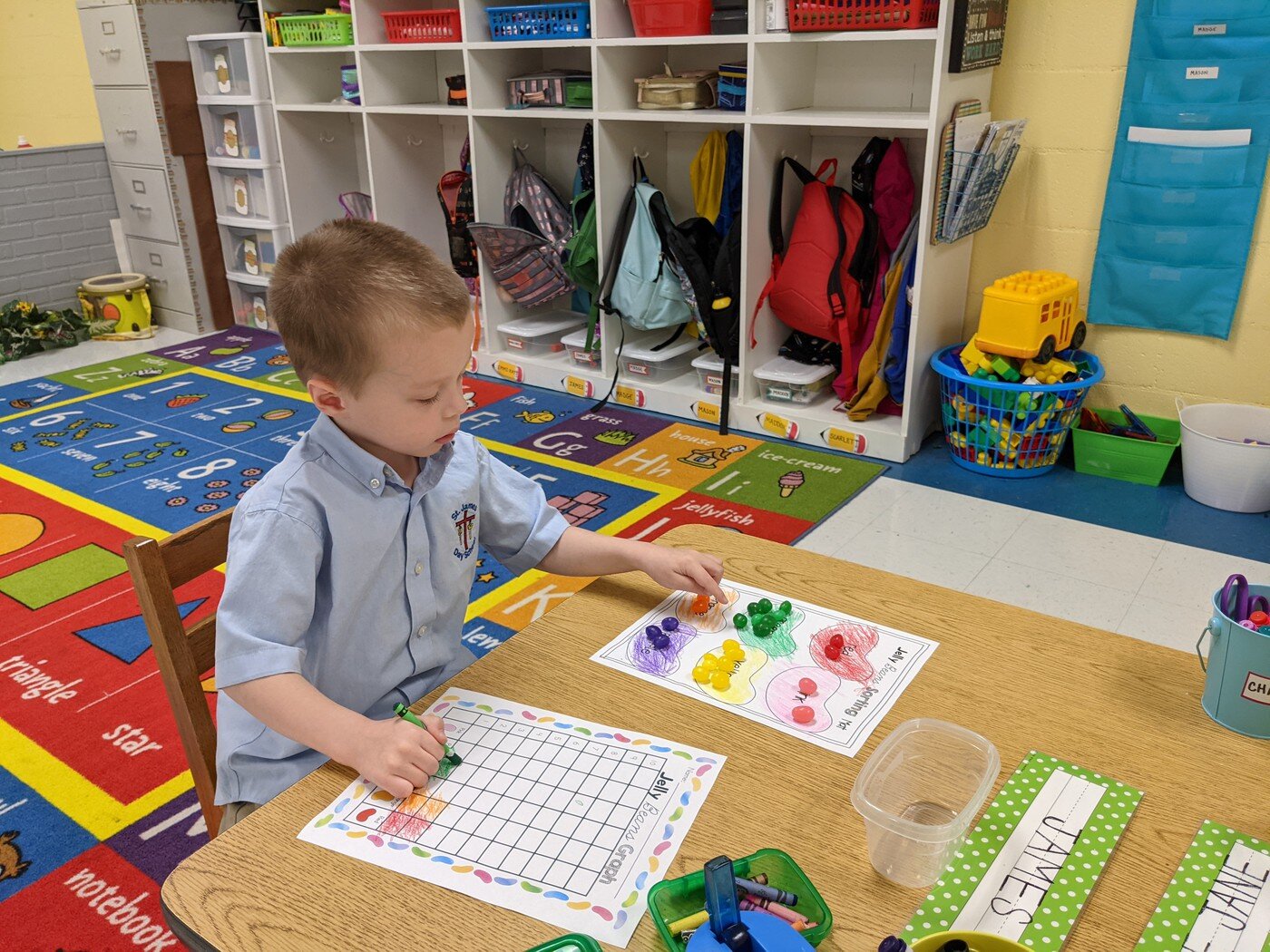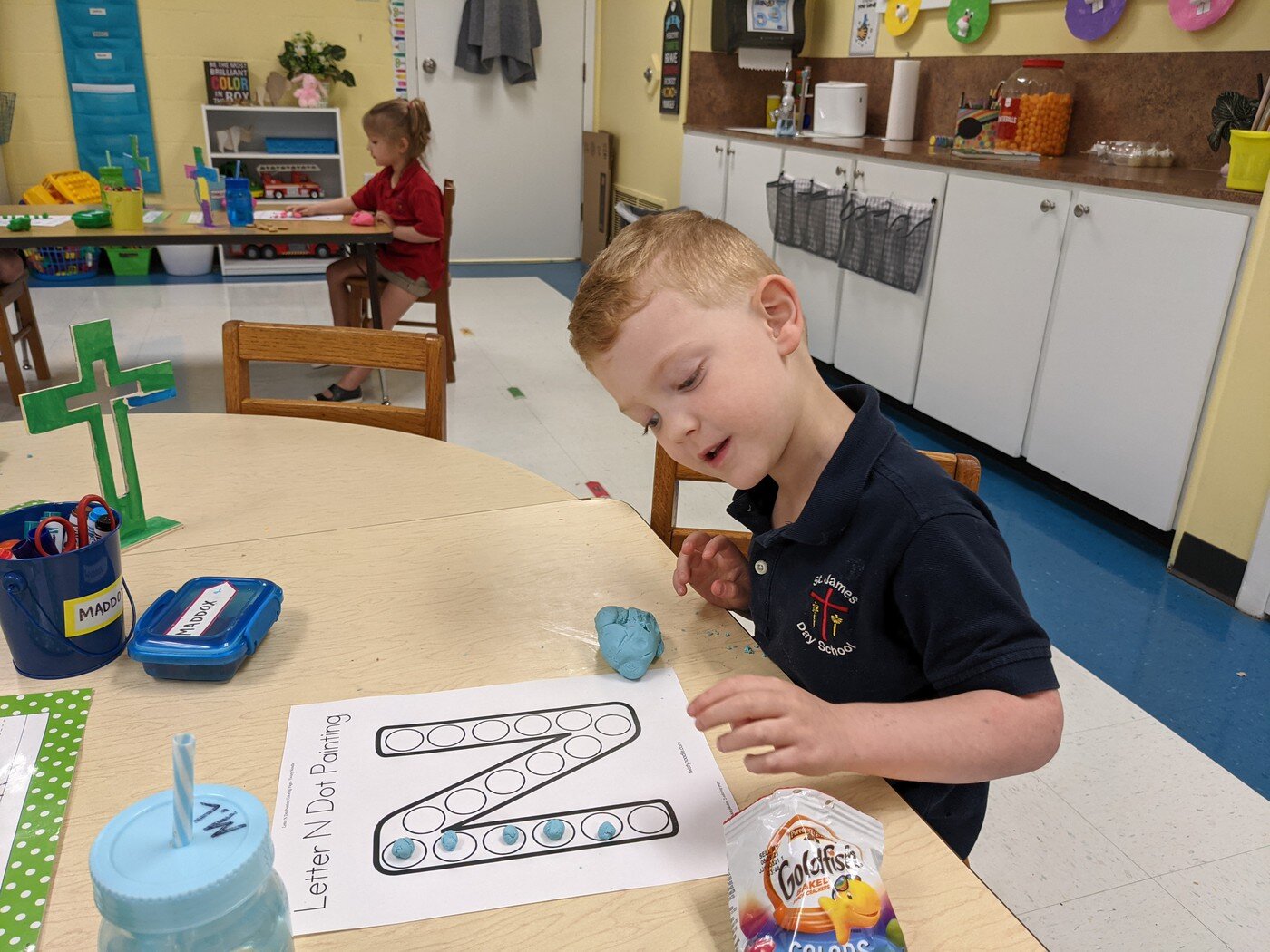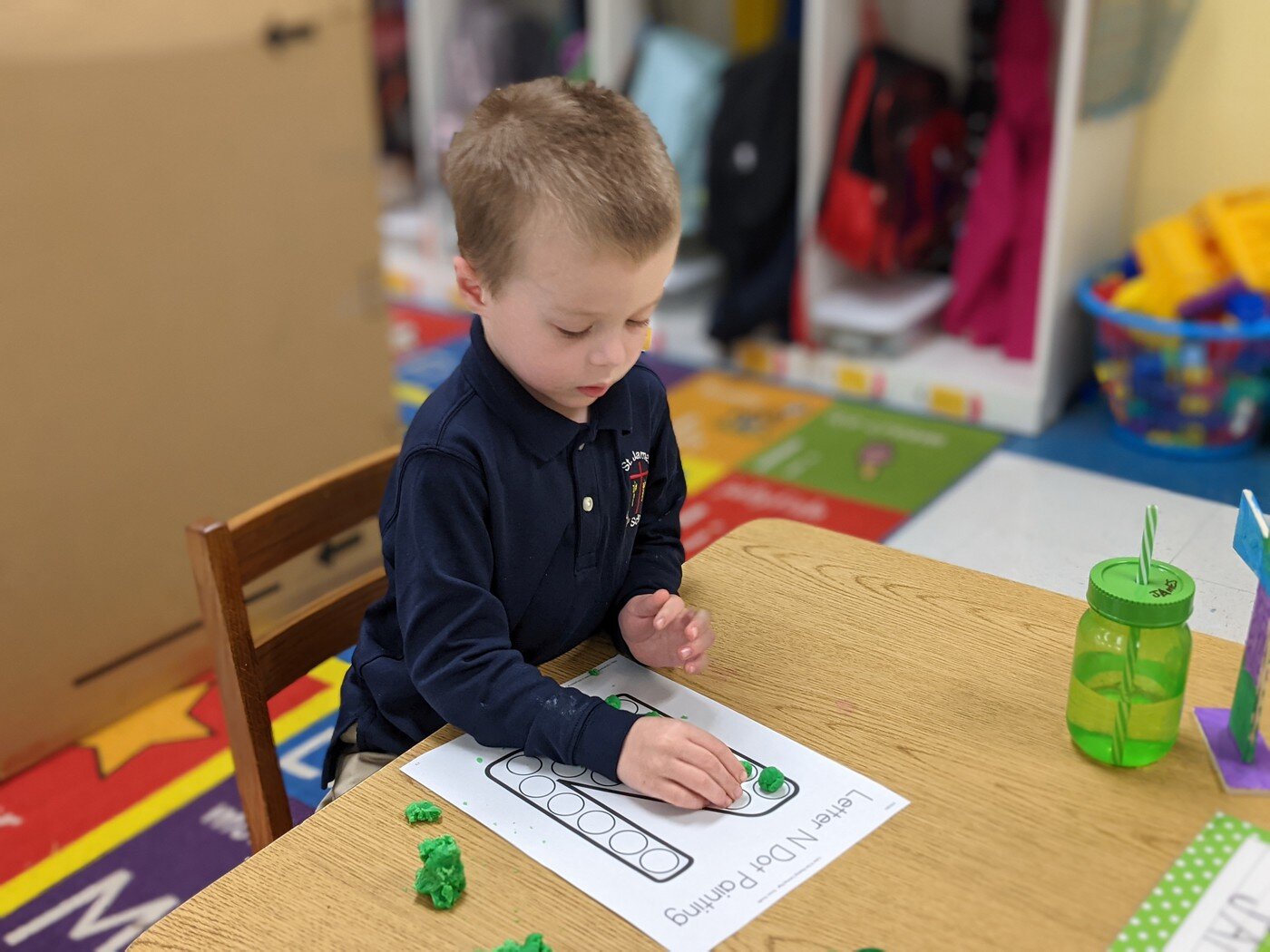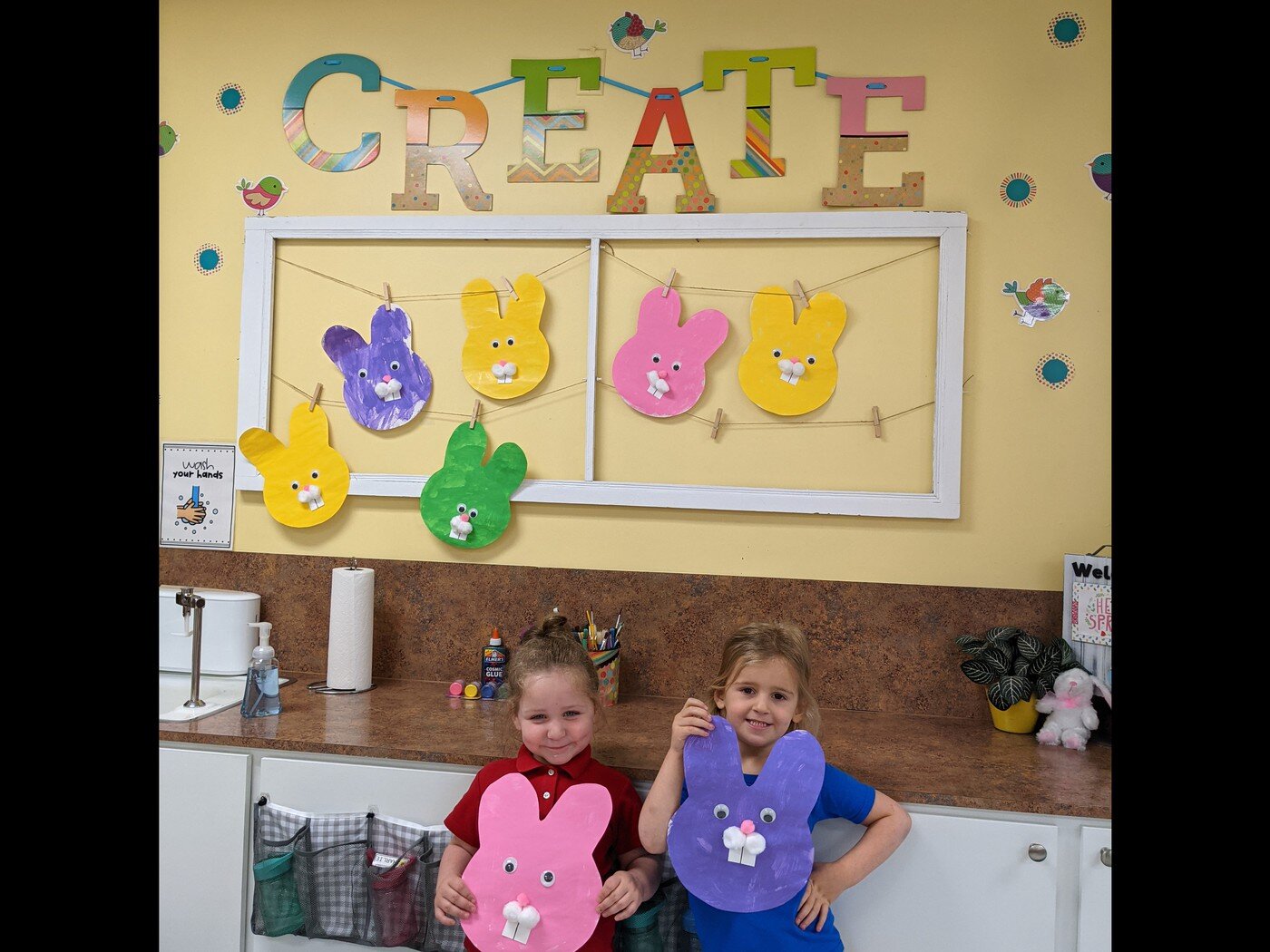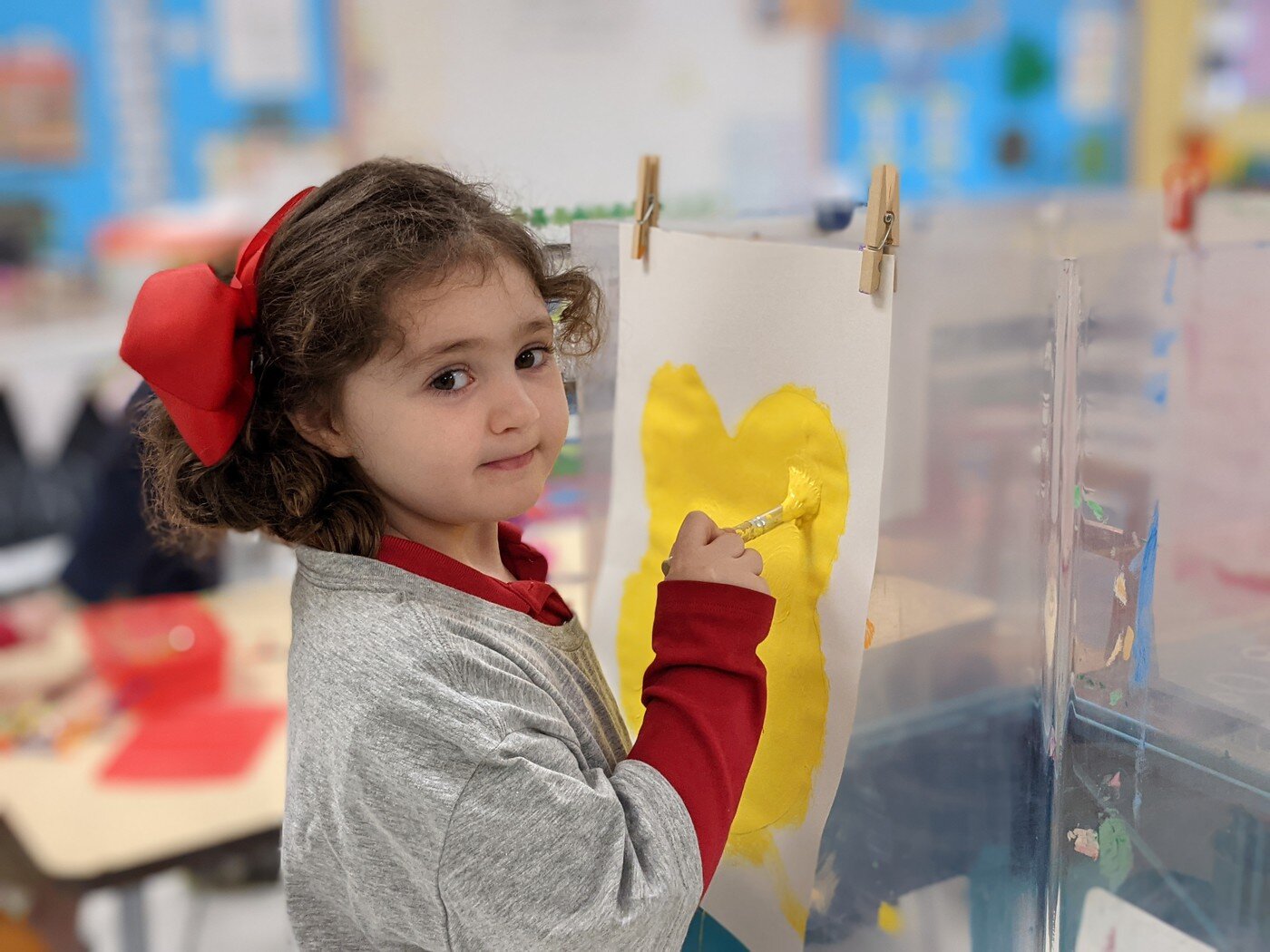One of our focus questions was "What should we do if we get scared at school?" A lot of the children said they would tell me or their parents. After reciting the nursery rhyme Little Miss Muffet, I asked them “How do you think Little Miss Muffet felt?" Everyone said “scared.” Each student had a chance to pretend they were scared as we reenacted Little Miss Muffet.
Spider Graphing
Are you scared of spiders? Yes or No





Trying curds and whey.



Another question was “What are our rules at school.” We sang Mary Had a Little Lamb and talked about her school and how lambs were not allowed. Each student shared a class rule and we discussed if it was a big rule (safety, walk in a crosswalk) or a little rule (how many kids can be in a center). For children to be able to regulate their behaviors, they must know what behaviors are acceptable.
Mary brought her lamb to school.
Tempo
This fun yet simple lesson about tempo engages young minds. Children love the challenge of trying to do something slow then fast. The boys and girls explored the concept of tempo through music. To identify the tempo we used rhythm sticks and scarves. We also used rhythm sticks to the nursery rhyme one-two buckle my shoe. These musical activities that relate to storytelling can focus on children's attention and enhance their social interaction.









































